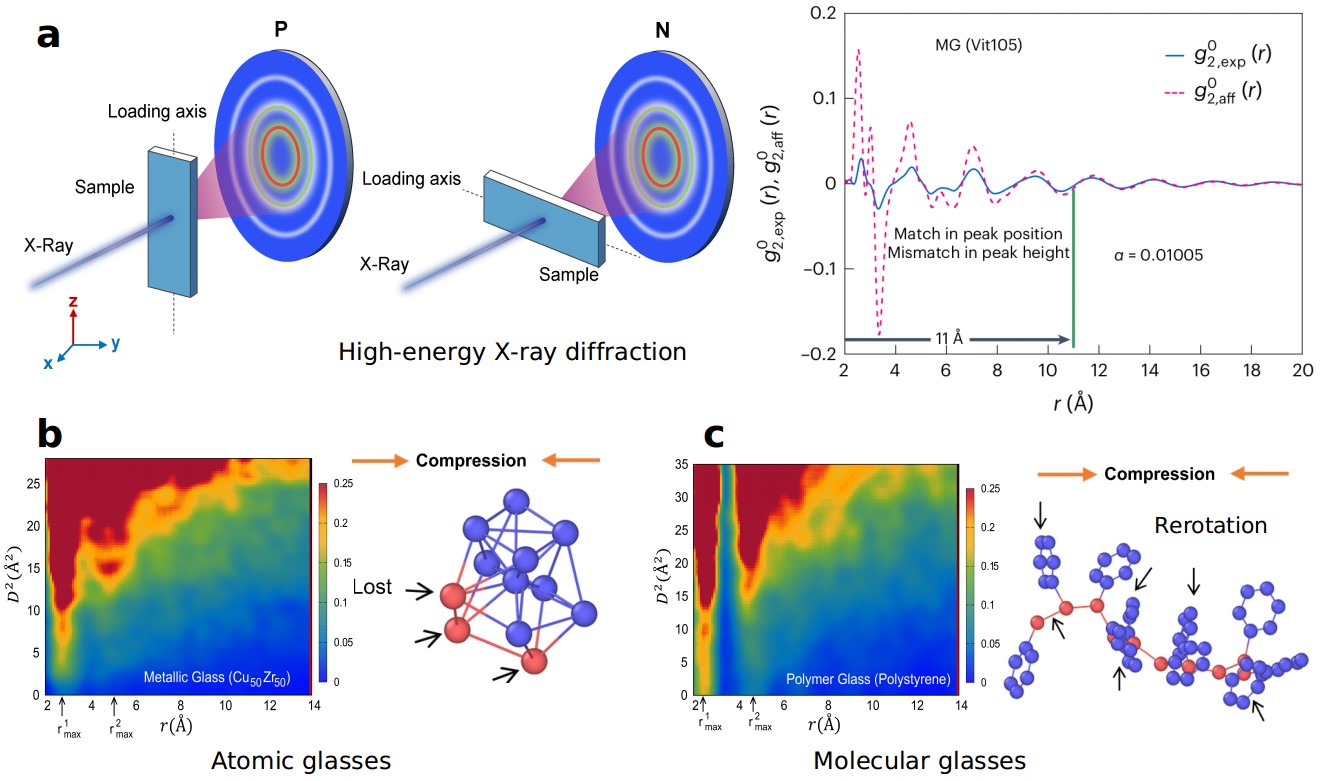Associate Professor Peng Hailong’s team from the School of Materials Science and Engineering, Central South University (CSU), recently published their research results as a paper titled “Nonaffine atomic rearrangement of glasses through stress-induced structural anisotropy” in the top international journal Nature Physics. The paper covers latest research findings in the field of condensed matter physics made by CSU School of Materials Science and Engineering in collaboration with the Institute of Physics, Chinese Academy of Sciences, and the Oak Ridge National Laboratory, USA. Associate Professor Peng Hailong from CSU is the co-first author and co-corresponding author.
The atomic-scale deformation mechanism of amorphous solids (glass) is one of the frontier issues in the fields of materials science and condensed matter physics, and it is also the basis for the design and application of macroscopic properties of glass materials. Crystalline materials have a long-range ordered atomic structure, and their plastic deformation can be realized through atomic movements in some crystal defects (such as dislocations and grain boundaries). Such defects can be regarded as carriers of plastic deformation, and these deformation carriers can be easily identified and described in ordered lattices through experimental means such as transmission electron microscopy. However, it is difficult to define defects in the disordered structure of glass, and how the atoms in the amorphous disordered structures respond and move during deformation so far remains a great challenge both in theoretical description and experimental characterization. Nonaffine displacements, which are the parts that deviate from the uniform linear response, are the most relevant physical quantity for clarifying the atomic-scale plastic deformation mechanism of glass materials.

By using high-energy X-ray diffraction, the team experimentally measured the amount of structural anisotropy of four different bonding types of glass materials (zirconium-based amorphous alloy, elemental amorphous selenium, oxide glass B2O3, and polymer glass Polystyrene) after high-temperature creep (see Figure a (left)). Due to creep, the amount of structural anisotropy of the sample is not zero, but deviates from the theoretical prediction under affine deformation. In metallic glass (see Figure a (right)), theoretical predictions and experimental measurements match outside of 11 Å, indicating that nonaffine deformation in metallic glass is a localized behavior. Based on the results of molecular dynamics simulations, the team found that there is a close correlation between the structural anisotropy and nonaffine deformation at the atomic scale: the greater the structural anisotropy, the larger the nonaffine deformation (see Figure b (left) and Figure c (left)). In addition, molecular dynamics also better demonstrates the atomic motion mode of microscopic deformation of glass materials: the nonaffine deformation of amorphous alloys mainly comes from the formation of new atomic bonds caused by the elongation or shortening of atomic bonds (see Figure b (right)). The nonaffine deformation mode of glass with directional bonding is the rotation of molecular bonds/chains (see Figure c (right)). The research has revealed the atomic rearrangement mechanism that leads to nonaffine deformation in atomic/molecular glasses, and provided a basis for understanding the macroscopic mechanical deformation behavior and properties of various glass materials.
(First Reviewer: Li Bei, Second Reviewer: Wang Xuan, Third Reviewer: Li Yin)
Source: School of Materials Science and Engineering Author: Cai Zhenyang)
Original article link: https://news.csu.edu.cn/info/1003/157114.htm











